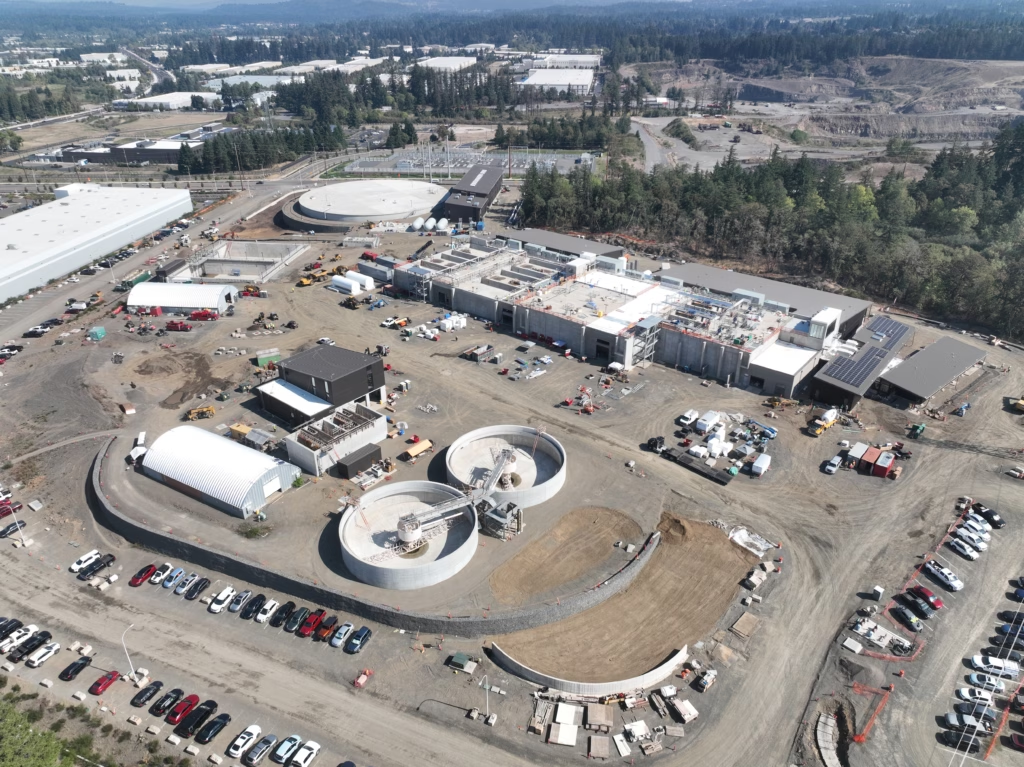A water supply system built to bend, not break
October 22, 2025

AWWA Articles
A water supply system built to bend, not break
A decade ago, the Tualatin Valley Water District (TVWD) and the cities of Hillsboro and Beaverton in northwest Oregon came together to invest $1.6 billion in a new supply system.
It wasn’t just any supply system, but a system built to withstand the very real threat of seismic activity present for their geography.

Oregon sits along the Cascadia subduction zone, a 620-mile-long megathrust fault line that has produced magnitude 9.0 (or greater) earthquakes in the past (and “undoubtedly will in the future,” according to the Pacific Northwest Seismic Network).
“Being earthquake resilient was a priority for this new supply system, especially when making an investment this large,” said Joelle Bennett, assistant program director for the new Willamette Water Supply System.
To aid design, engineers considered Oregon’s Resilience Plan, which sets recovery targets for utilities after seismic events, and information from subduction zone earthquakes around the world. Informed by estimates from the U.S. Geological Survey about what future earthquakes could look like in the region, engineers devised parameters for design that considered the long duration of high-magnitude shaking predicted for the next seismic event in the Cascadia subduction zone.
“Earthquake resilient design usually means providing flexibility at key points, because if things are fixed, they are likely to break,” Bennett said.
That principle led them to choose welded steel for the 30 miles of transmission pipeline needed, one of the first pieces of their seismic-resilient design. “It seems counterintuitive, but that’s actually a flexible pipeline that can move with the ground,” she said, “including the wave motions that earthquakes will bring in our soft valley soils.”
The team also required shake-table testing and seismic certification for critical mechanical and electrical equipment in the water treatment plant, pump stations, and the storage reservoir that are part of the new supply system. “That gives us even higher confidence that we can recover our operations in a timely manner,” Bennett said.
That’s because a swift recovery after an earthquake is just as critical as the ability to withstand it. The supply system aims to restore 50% of capacity within 48 hours of an event. Part of what helps is the supply system’s water treatment plant location — literally carved out of rock.
“We were able to find a basalt outcrop on which to locate our water treatment plant, so it is a very fixed point for our system, which is ideal for a complex facility; and we have flexible connections between it and the transmission pipelines,” said Bennett, who will transition after construction is complete to manage operations of the supply system.
Additionally, the new system’s seismically-smart design is influencing the distribution system infrastructure maintenance and operations — so that when the new supply system comes online, it is integrated with similarly resilient components for water delivery to customers.
“The seismic standards that Joelle and her team have brought to the system have really pushed the rest of our capital projects to a higher level of resiliency planning,” said Justin Dyke, communications director for the Tualatin Valley Water District. “We’ve been replacing reservoirs and pump stations as they age out of service normally, and we’ve been using those new standards to improve the rest of the distribution and storage network inside of our service area.”
The Willamette Water Supply System is funded through a combination of water rates, reserves, revenue bonds, and loans through the Water Infrastructure Finance and Innovation Act (WIFIA). The water district and the city of Hillsboro were the first recipients of WIFIA loans intended for a joint project. The loans, totaling $639 million, saved ratepayers an estimated $263 million in costs. Dyke said the loans were a critical part of the financing for TVWD.
“The amount of money we would have had to raise to pay for a project of this scale without the WIFIA loan is,” he paused and added, “It’s a lot different from having access to a funding mechanism like the WIFIA program. It’s a tremendous asset.”
The supply system is scheduled to come online next year, delivering water to 350,000 residents.
Advertisement